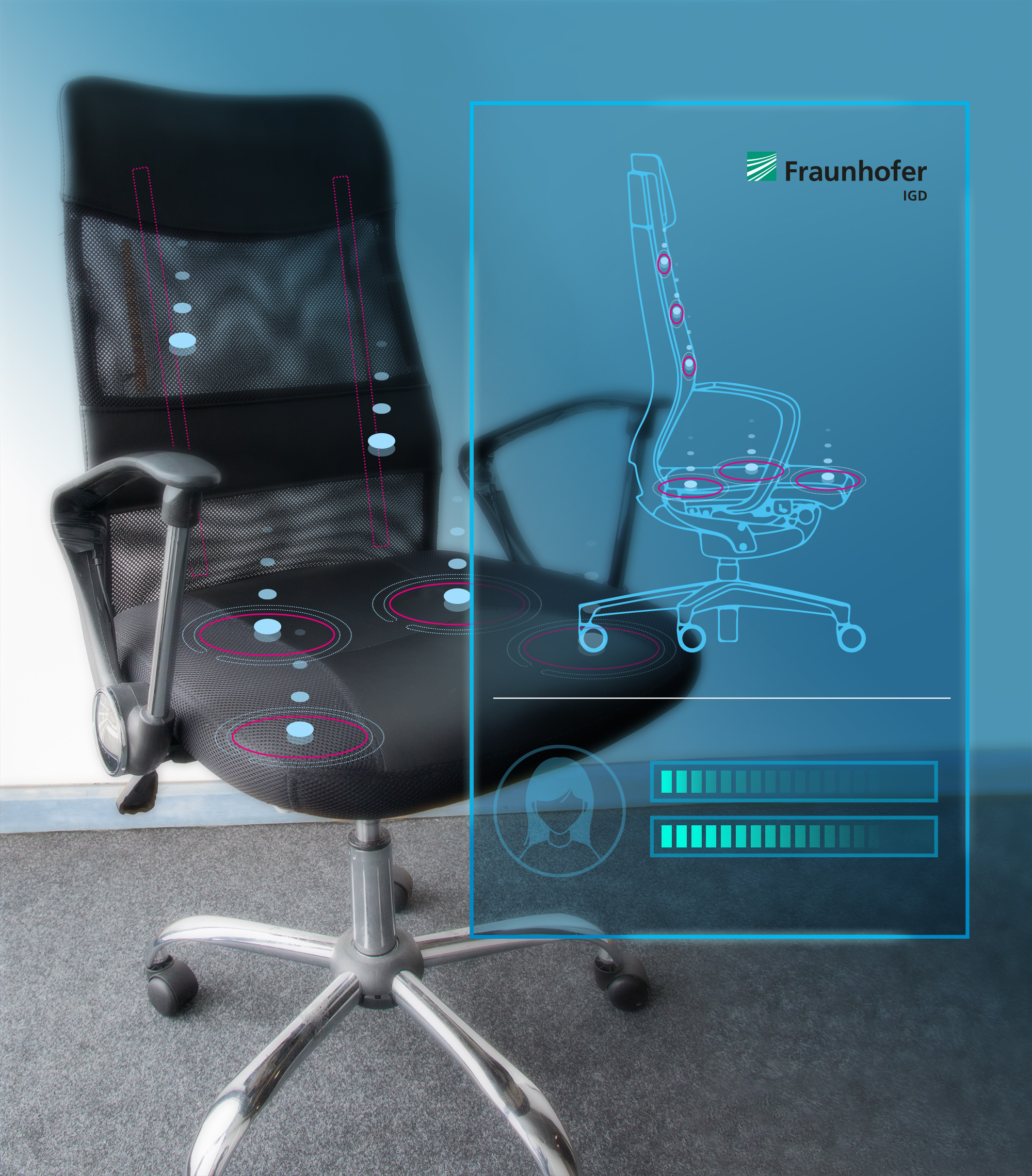Smart chair promotes healthy sitting
Furniture with sensors that detect movement without even making contact can help monitor health. Fraunhofer IGD will be presenting a smart chair with capacitive sensor technology at the DMEA healthcare event.

The Fraunhofer Institute for Computer Graphics Research IGD will be presenting a smart chair at the DMEA healthcare event in Berlin that can detect sitting positions and movements, and then send guidance to a PC, smartphone or smartwatch. Those who spend the majority of their workday seated are shown an ergonomic sitting position or reminded now and then to stand up for a little bit. To achieve this, a commercial office chair was outfitted with capacitive sensors in the seat, backrest and armrests. Their decisive advantage over pressure sensors: They can detect a person’s sitting position and movements even without making direct contact.
Smart chair monitors health exercises
Position detection is relevant at the workplace not just for preventing back pain from prolonged or incorrect sitting. After an operation, patients can be prescribed targeted exercises as part of their follow-up care. By connecting to an app, they are not only reminded to stick to their exercises, they also get direct feedback on whether they are performing their exercises correctly. For this exercise tracking, machine learning is used to teach a number of possible motion sequences in advance, then users select the exercises prescribed for them along with duration and frequency. Chair and app become personal health assistants and can even give healthcare professionals valuable information for monitoring follow-up care. At the event, these functions will be demonstrated on an internally developed app. It is also generally possible to connect to existing health and fitness apps.
How do capacitive sensors work?
Capacitive sensor technology uses the ubiquitous presence of electrical charge. Our surroundings produce weak electric fields, the changes in which the sensors can detect. Because the human body is largely composed of ionized water, it acts as one part of electrical capacitance, while the immediate surroundings, such as a backrest, act as the other end. When the backrest is approached, the electrical capacitance of this field changes. Even if the back does not touch the backrest, its position is detected and factored into the analysis and guidance. Since the actual sensor and the electrodes that make up the sensor unit can be separate from one another, this sensor technology is easy to install and affordable to buy. Capacitive sensors can be inconspicuously integrated in everyday environments, hidden under materials or in furniture both during production or as an aftermarket upgrade. This makes them an important part of today’s smart living concepts. The applications are versatile¾a smart chair is just one scenario that serves as an example of what capacitive sensor technology can make possible in smart homes and in healthcare. Fraunhofer IGD is looking for industry partners, e.g., in furniture manufacturing, that are interested in further applied research to advance the use of capacitive sensor technology.
 Fraunhofer Institute for Computer Graphics Research IGD
Fraunhofer Institute for Computer Graphics Research IGD